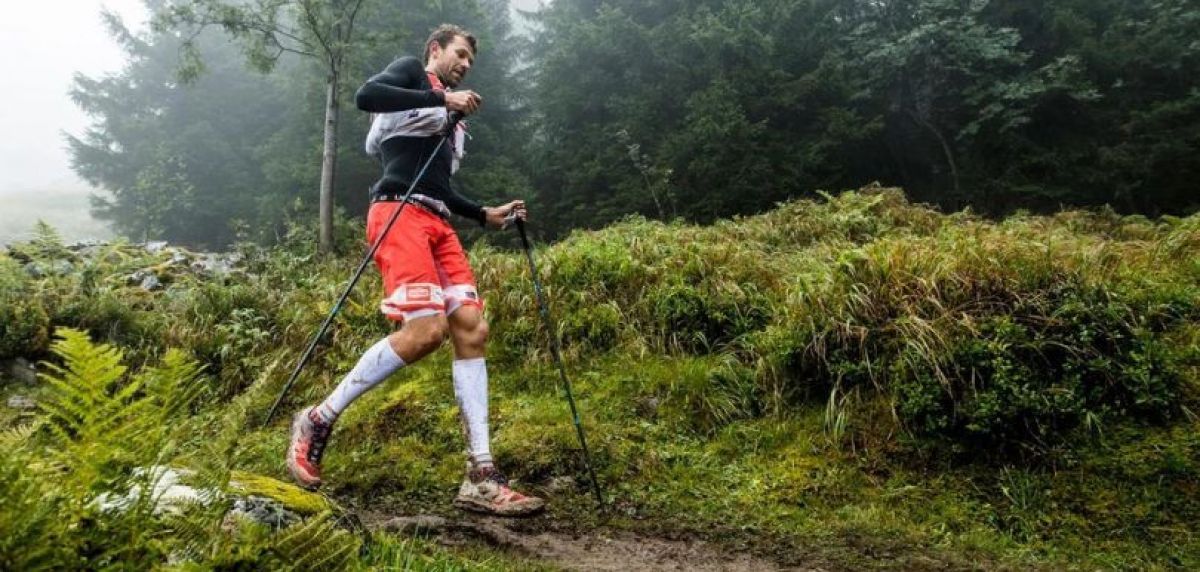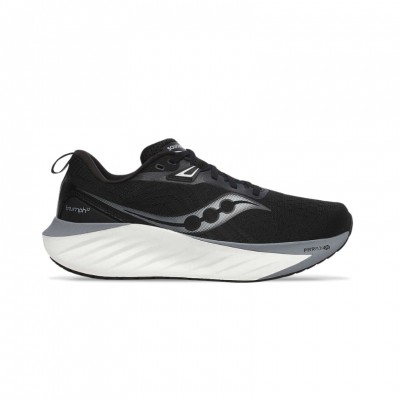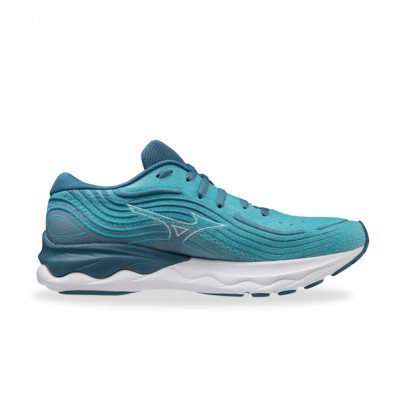Poles are fast becoming an essential piece of equipment for trail and mountain runners. Join us to take a look at why you should give them a try and how to choose the right ones for you.
Trail running has seen a huge surge in popularity in recent years, as increasing numbers of runners turn their backs on the roads in favour of the great British countryside. One of the biggest thrills of trail running is its simplicity. There's something wonderful about being able to head out into the unknown, clad only in your shoes and hydration vest or belt. However, as many runners are discovering, a well-chosen pair of poles can enhance your experience on the trails, especially over longer distances, and contribute to increased speed and performance.
Many factors come into play when choosing trail running and/or trekking poles for your expeditions in the hills, notably the length, weight, material, folding system, and type of terrain.
Read on for advice on how to select your poles and tips for getting the most out of them on the trails.
Not sure which shoe to choose?
In a few simple steps we help you to choose the ideal running shoe for you.
GO TO THE RECOMMENDER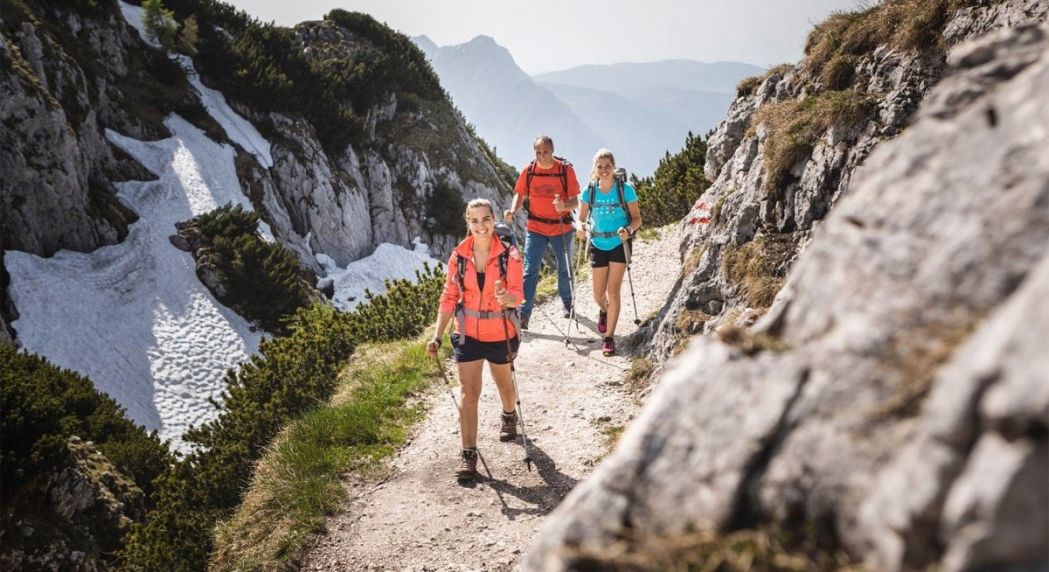
What are the benefits of trail running/trekking poles?
Poles can increase your running efficiency over long or mountainous runs, not just on the uphills but also on descents and tricky surfaces. Here are some of the main benefits:
- Greater stability and balance, especially on downhill sections or over tough terrains.
- Reduced joint damage and faster recovery due to impact reduction on the downhills.
- Using your upper body allows you to save energy by giving your legs a bit of a break.
- Increased speed due to a bigger propulsive force.
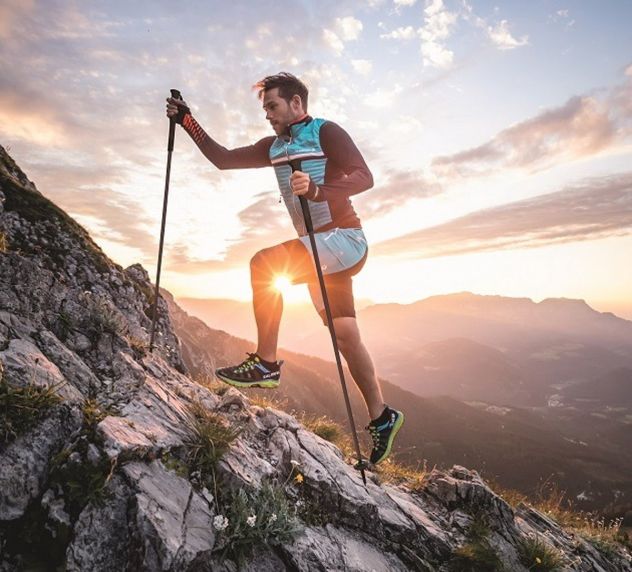
What's the best technique for running with trail running poles?
Using poles efficiently when running requires a little practice. A good technique will allow you to save precious energy, but the opposite is true for poor technique, and the poles could become more of a hindrance than a help..
The best method for getting the most out of your trail running poles will vary depending on your preferences, the terrain, and the gradient of the slope. The two main techniques are as follows:
- Double pole plant: Bring both arms up at the same time, then drive both poles into the ground in front of you. Lean forward and push into the poles for three steps. This technique is especially useful for steep climbs.
- Alternate: Plant one pole at a time, alternating with your leg movements. When you step forward with your right leg, plant your left pole into the ground. This technique is ideal for a fast pace on steep terrain.
It’s important to make use of the poles’ wrist straps to help you maintain a good grip and efficiency. Put your hand through the strap from bottom to top, then grip the handle. You will be able to push down hard on the straps without having to squeeze the handle too hard.
A guide to choosing your poles
Here are a few tips to help you choose the best poles for your activities:
Size
The pole length is undoubtedly one of the main factors when choosing your model. You should be aiming for your elbows to be at an angle of 90° (or just under) when you hold the stick vertically. To calculate your pole length, you can apply the following formula:
Height (cm) x 0.67 = pole length
Approximate indications according to your height:
- Under 155 cm: 100 cm pole
- 156 cm to 172 cm: 110 cm pole
- 173 cm to 182 cm: 120 cm pole
- 183 cm and above: 130 cm pole
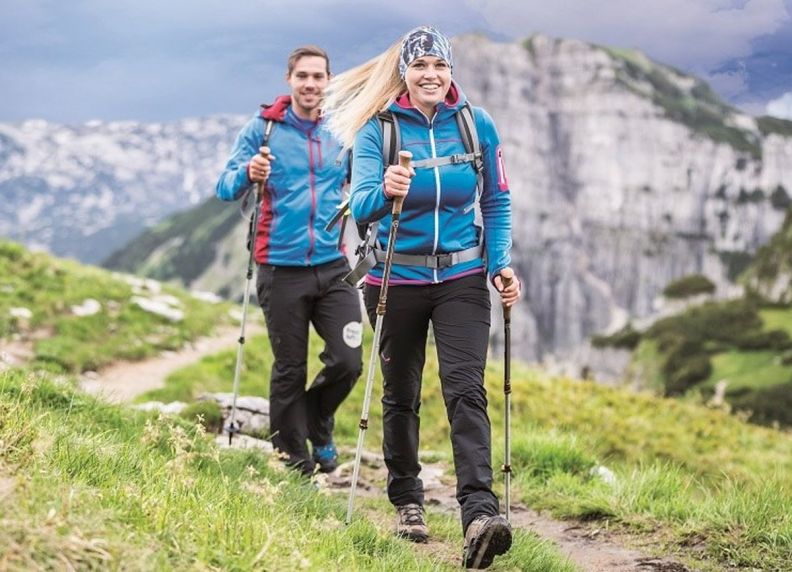
Single- or multi-stranded
Single-stranded or single-piece poles are lighter and stronger than their foldable counterparts, but can be awkward to carry during stretches where you don’t want to use them. The best way to transport them when not in use is to hold them upside down near the midpoint.
Multi-stranded poles can be folded down and stored when not in use.
Foldable or telescopic
Foldable poles are the most popular. They’re not quite as light or strong as single-stranded poles, but they are a good compromise given how easy they are to transport, fold, and unfold. Poles can fold down into three or four parts, usually at the press of a button, and will slide into or clip onto any trail pack.
Telescopic poles are more robust than their foldable counterparts and have the added advantage of having an adaptable length. Once collapsed, they’re easy to transport; however, they are slightly more fiddly to set up than foldable poles.
Carbon or aluminium
Carbon is the most sought-after material for running poles due to being lighter and therefore less taxing to transport. However, carbon poles also break more easily, are less resistant to bending, and are pricier. Aluminium poles are heavier but more durable.
Six trail/trekking poles recommended by Runnea
Without further ado, here are some of the best poles on the market.
Black Diamond Alpine Carbon Z
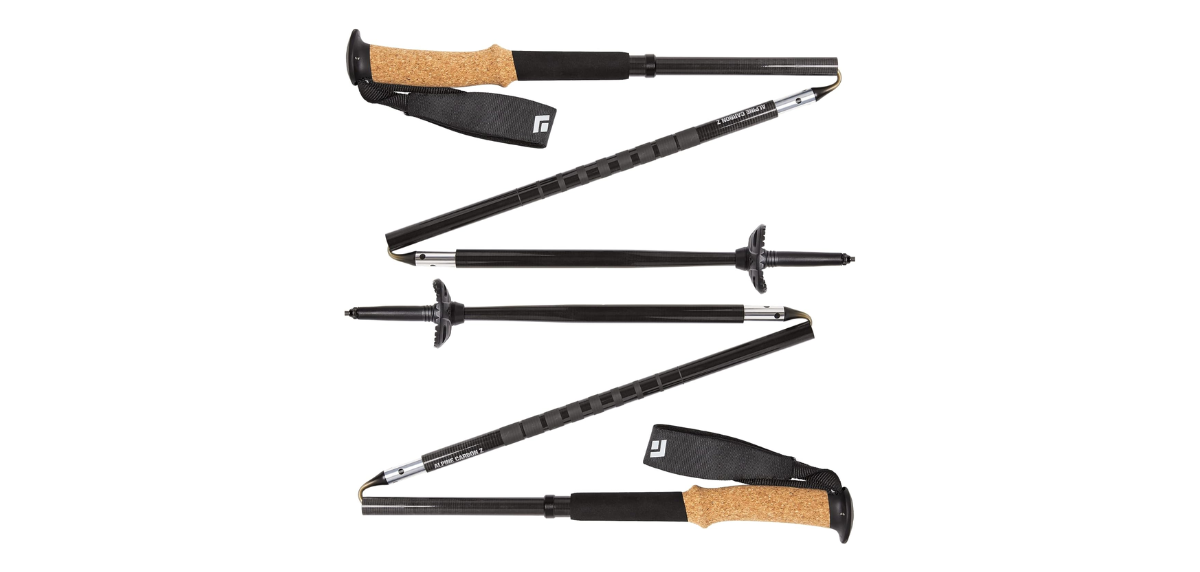
The Black Diamond Alpine Carbon Z poles are designed for trail running. They’re 100% carbon, and have a quick and easy folding system. The poles are extremely light, and the cork grip handles ensure a secure and ergonomic grip.
Leki Ultratrail FX.One Superlite
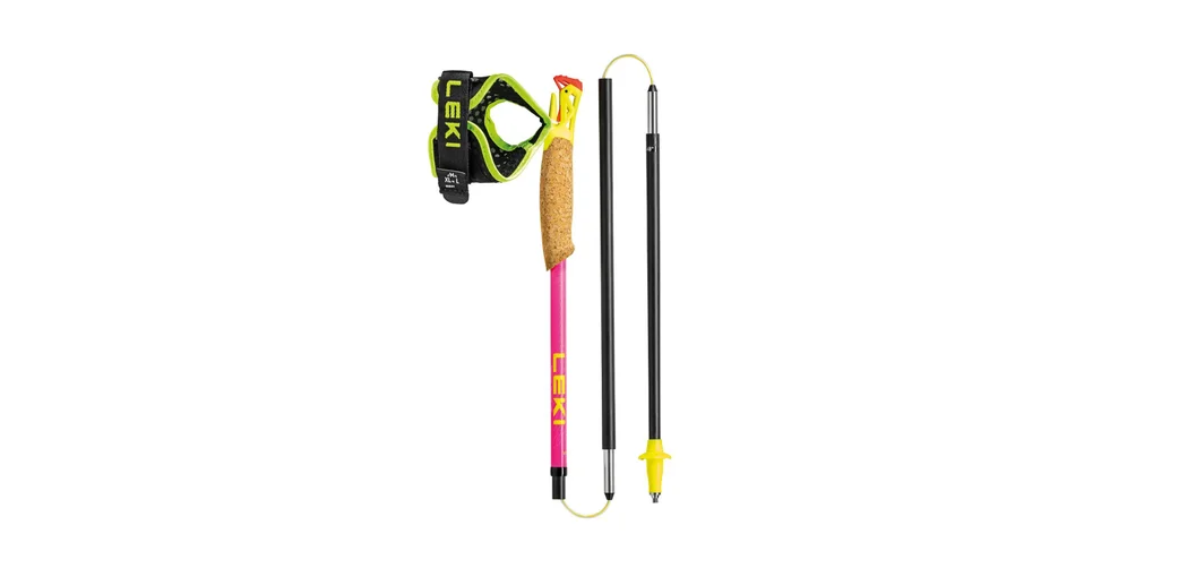
The Leki Ultratrail FX.One Superlite poles are specifically designed for trail running. Their super light carbon structure, exceptional power transfer, and concave carbide tip help you to manoeuvre yourself across all terrains with ease.
An exceptional feature unique to Leki poles is the integrated “Trail Shark,” system. Classic wrist straps are replaced with gloves that snap into the poles, and designed to transfer power directly from each hand to the centre of the pole. The quick connect/release system means that you can free your hands without the hassle of getting in and out of a regular strap.
MSR DynaLock Ascent Foldable Carbon Backcountry Trekking Poles
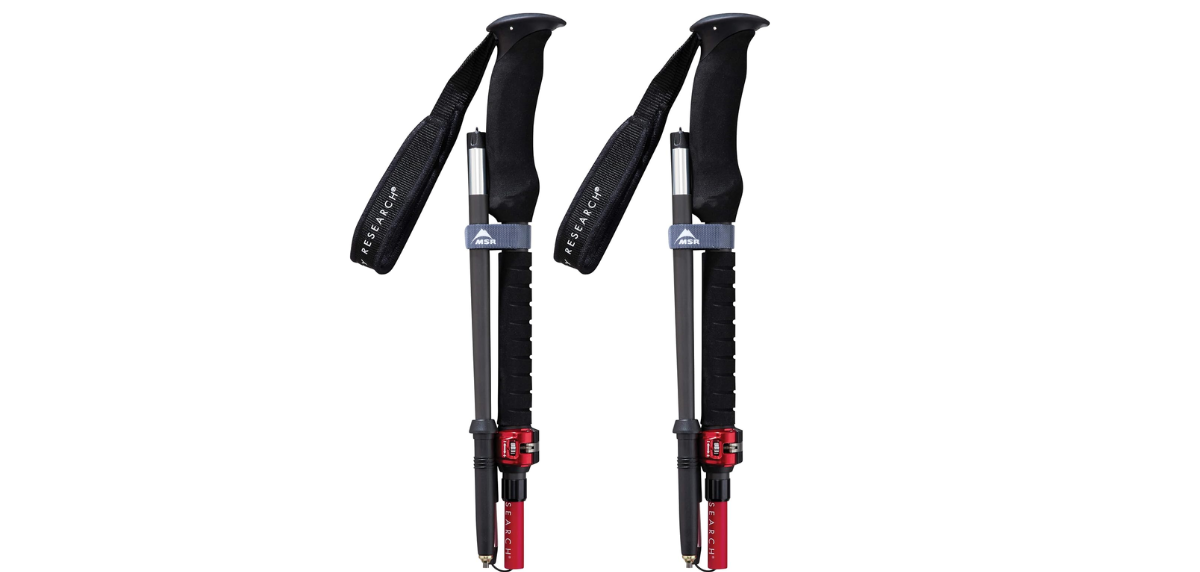
The MSR DynaLock Ascent Carbon Backcountry poles are beautifully simple to use and fold away, and are extremely durable due to their Kevlar-reinforced carbon fibre construction. They are heavier than many other models, but are an excellent option for runners who are looking for something tough and long-lasting. Another great feature is the DynaLock mechanism, which allows you to adjust the length of the poles by up to 20 cm. The EVA foam grips are lightweight and comfortable with an extended lower grip for multiple hand placements.
KIPRUN 3-Piece Carbon Folding Trail Running Poles
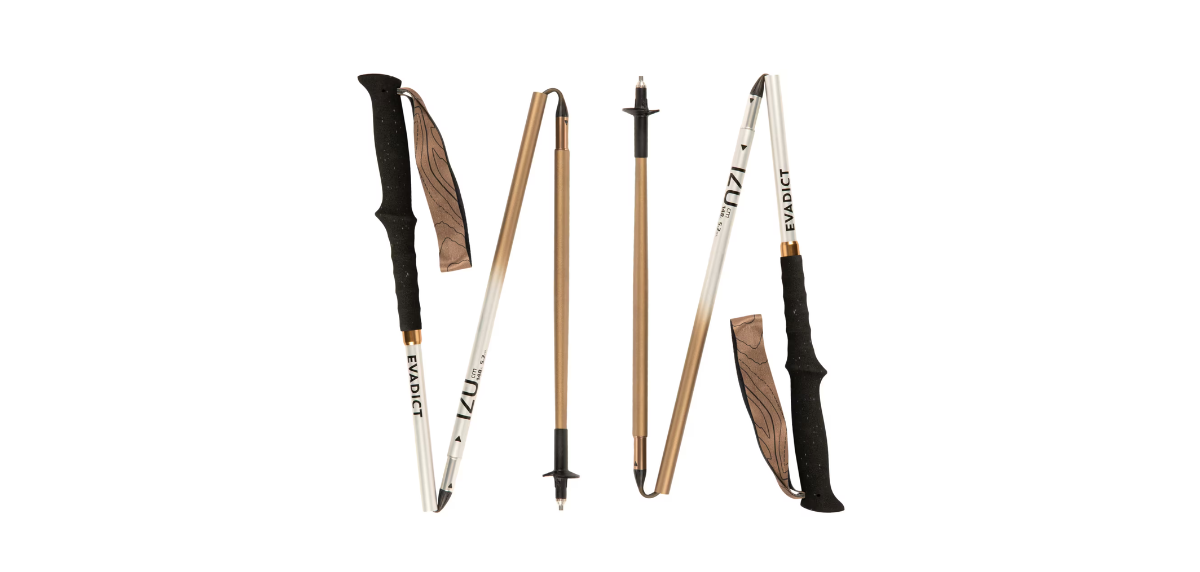
The KIPRUN 3-Piece Carbon Folding Trail Running Poles are a testament to Decathlon's reputation for quality and performance. The lightweight carbon construction, super fast deployment, ergonomic foam handles, adjustable wrist straps and trekking baskets are all you need in a trail running pole.
Komperdell Carbon C3 Cloud Walking Poles
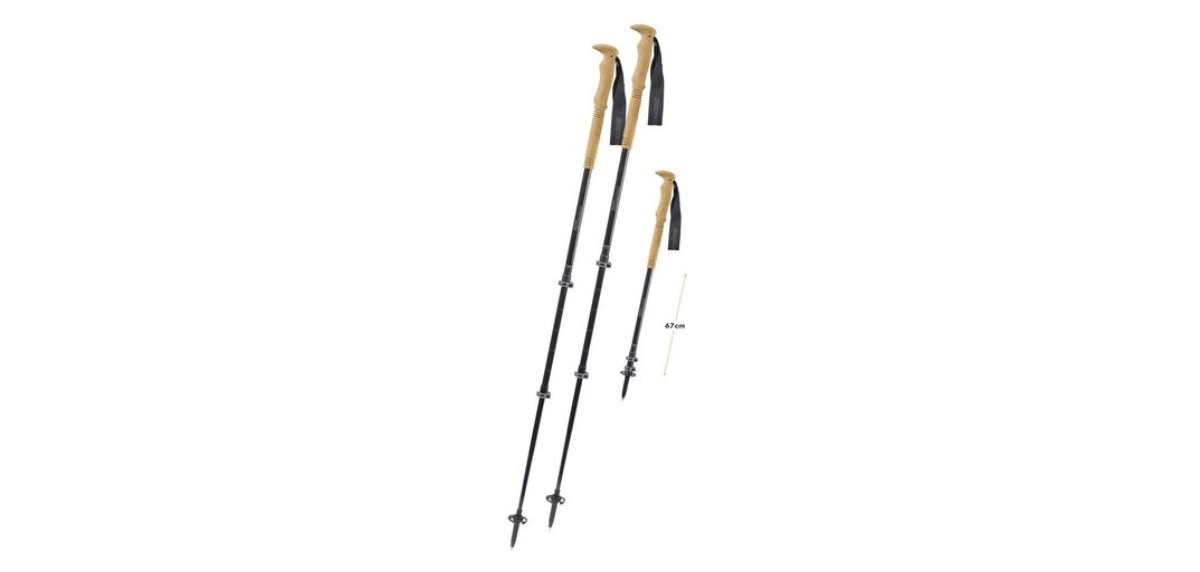
These telescopic poles from Komperdell were designed specifically for trail runners. They’re compact, light, incredibly strong and easily adjustable from 105 to 140 cm. The lock system feels sturdy, and the padded straps protect your wrists.
Mountain King Trail Blaze
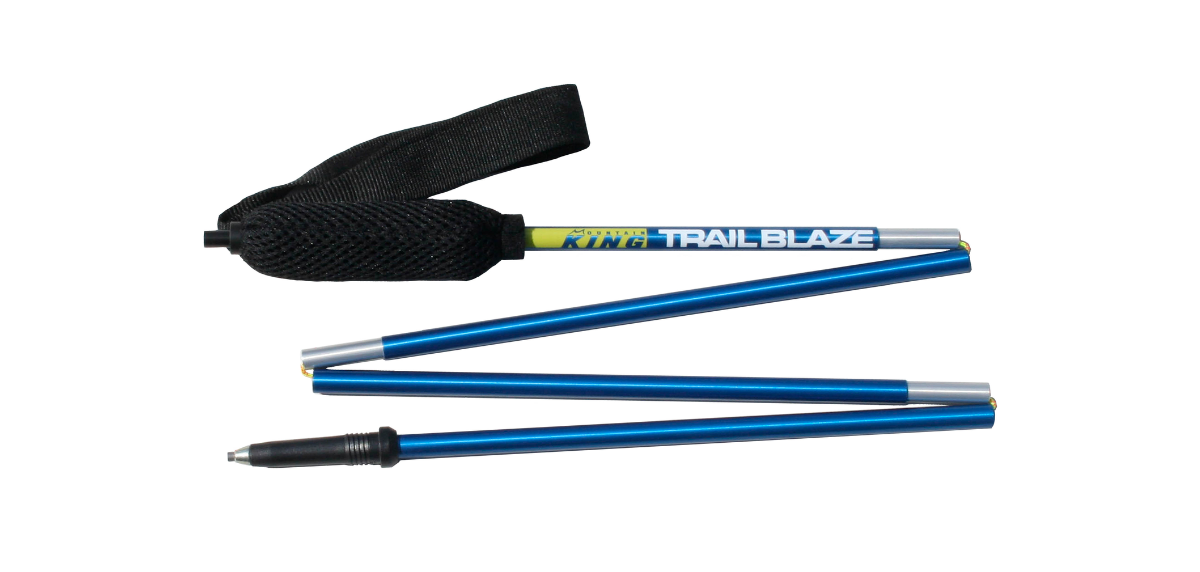
These four-section foldable Mountain King poles are made from a lightweight aluminium alloy. They’re comfortable, compact, resistant, highly affordable, and have the added bonus of being made in the UK!
What are you waiting for?
We hope you’ve enjoyed learning about the different poles used for trail running and trekking. The correct poles combined with an efficient technique have the potential to revolutionise your experience on the trails.
Happy running!
Read more news about: Outdoor
